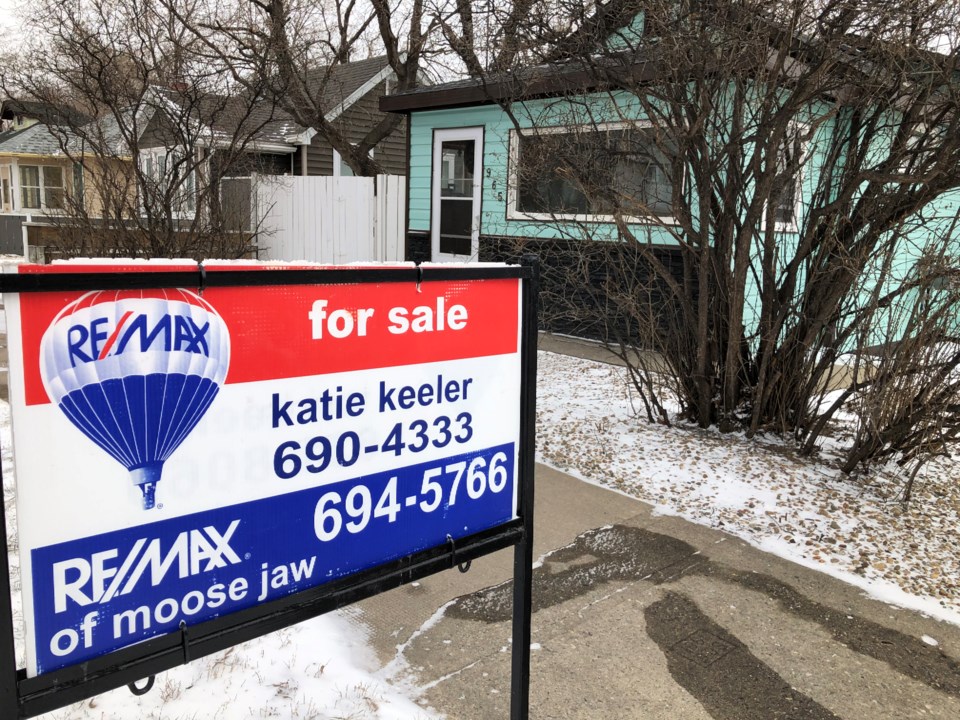It was mostly downward-pointing red arrows for home sale data in Moose Jaw in March, with the only green arrow being a 3.4-per-cent jump in home prices.
There were 54 homes sold in Canada’s Most Notorious City last month, a decline from 59 units sold last March, data from the Saskatchewan Realtors Association (SRA) shows.
There were 80 new listings in March, a drop from 86 units during the same time in 2021. Furthermore, the inventory of available homes for sale stood at 143 units, which declined from 177 homes compared to last March.
That number of available homes meant there were 2.65 months of supply available in the city, which was a drop from 3.07 months of supply last March. Meanwhile, most homes stayed on the market for 45 days.
The average price of a home in Moose Jaw last month was $243,912, a jump from $234,156 in March 2021.
The 10-year average for this month shows there are usually 43 homes sold, 94 new homes listed, 247 units in inventory, 6.37 months of supply, 65 days of homes on the market, and the average house price is $244,420.
Year-to-date, there have been 122 home sales, 199 new listings, 139 units in inventory, 3.43 months of supply, 52 days of homes on the market and the average house price is $259,809.
The 10-year average for year-to-date statistics shows there are usually 102 homes sold by March, 232 new homes listed, 227 homes in inventory, 7.29 months of supply, 69 days of homes on the market and the average house price is $229,310.
Provincial outlook
Province-wide, sales and new listings trended up in March compared to levels seen during the past few months, but the level of new listings coming onto the market was lower than last year and below the 10-year average, according to the SRA. This caused the sales to new listings ratio to rise and prevented any notable change to the supply situation.
With 5,648 units in inventory across Saskatchewan, levels are nearly 30-per-cent lower than traditionally seen in March.
“March is typically the month that we start to see more people listings their homes adding supply to the market. While we did see more new listings compared to the winter months, it hasn’t been enough compared to the sales to make any significant change in supply, resulting in further price gains in the market,” said SRA CEO Chris Guérette.
Economic conditions have improved across most sectors, and with that, the province has seen gains in employment and reductions in unemployment, she continued. This, along with relatively low lending rates, is likely supporting further confidence in the housing market and continued strength in demand.
While sales did ease in March over last year’s record levels, they remained 40-per-cent higher than long-term trends.
“As we move more into the spring market, supply will be a crucial factor. Should supply levels start to improve, we could see more balanced conditions slowing the upward pressure on prices,” Guérette added.
“However, this transition could take longer than expected, especially in our largest cities, which is why we’ve begun outreach to our industry partners to discuss how to address these supply shortages.”




